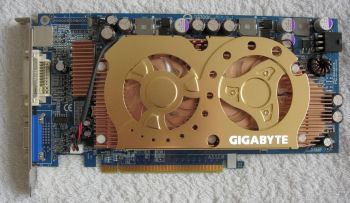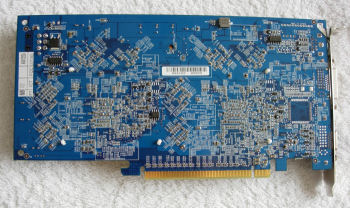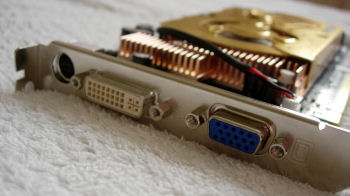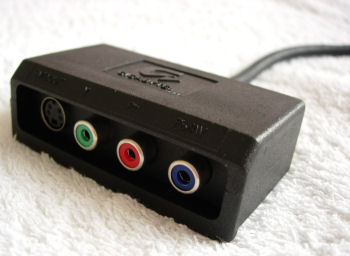Gigabyte 3D1
As we've mentioned, the 3D1 features not one but two NVIDIA GeForce 6600GT cores on the board. Beyond the fact there is two of them, there is nothing special about these cores, they are simply the same 110nm NV43 cores used in conventional 6600GT parts. The board effectively has 256MB of RAM and a 256-bit memory bus, or at least the PR would have you believe. Of course, the truth isn't actually quite that simple. Being as it is two GeForce 6600GTs, what we actually have is two 128-bit memory buses (one for each card), each feeding its own isolated 128MB of RAM. Effectively, what we are looking at here is exactly what you would get from a two card SLI setup, but slapped on to a single PCB. This also means that you are looking at the same pixel pipeline design as that of the standard 6600GT, with eight internal pipelines which output four pixels per clock.
When it comes to clock speeds, each core runs at a clock of 500MHz, a la a traditional 6600GT. Memory speed is a more interesting proposition however - Whereas a standard 6600GT card comes with RAM clocking in at 500MHz DDR, Gigabyte have elected to use chips capable of 600MHz DDR, giving an effective clock speed of 1.2GHz.
Taking your first look at the board, you can't help but feel a shiver down your spine - No matter how much you harp on about the failures of past dual-core GPUs, you can't help but be excited at holding such a board in your hands. The 3D1 looks the part too, sporting a large, dual fan cooling solution (one fan pulls in air, the other pushes it out), and a pretty busy looking PCB. The power required to feed two GPUs on a single card is also made evident courtesy of the six-pin power connector at the top corner of the board, something you don't see on a standard 6600GT, that's for sure.
From the image below, you may also notice the lack of an SLI connector on this board. Wonderful though it would be, there is no way of hooking up two 3D1 boards in what would basically become a four-way SLI implementation. This is no doubt mainly because the single 3D1 card requires 16 lanes of PCI Express bandwidth, and splitting that bandwidth into 8 lanes for each slot wouldn't be sufficient in the 3D1's case.
As this board requires all of the bandwidth PCI Express has to offer (Requiring all 16 lanes of the PCI-E 16x slot), we can see the PCI-E 16x connector here. Don't go waiting up for an AGP variant of this board, it simply won't happen.
Nothing too incredible on the back of the board, but here it is anyway.
The card's back plate gives us a familiar set of features - VGA, DVI and video out.
A breakout box is included for the video out-port, giving you both S-Video and component video outputs.
So, now you've seen how the card looks, I suppose it's time to sit you down and tell you the bad news. As it stands, the Gigabyte 3D1 will currently only work with their own nForce4 SLI-based motherboard, the GA-K8NXP-SLI. The list of compatible boards will no doubt grow, but most likely not beyond Gigabyte boards, as it appears that the motherboard BIOS needs to explicitly recognise the card for it to be supported correctly. So, this severely limits your choices if you want to have your wicked way with this particular card.














